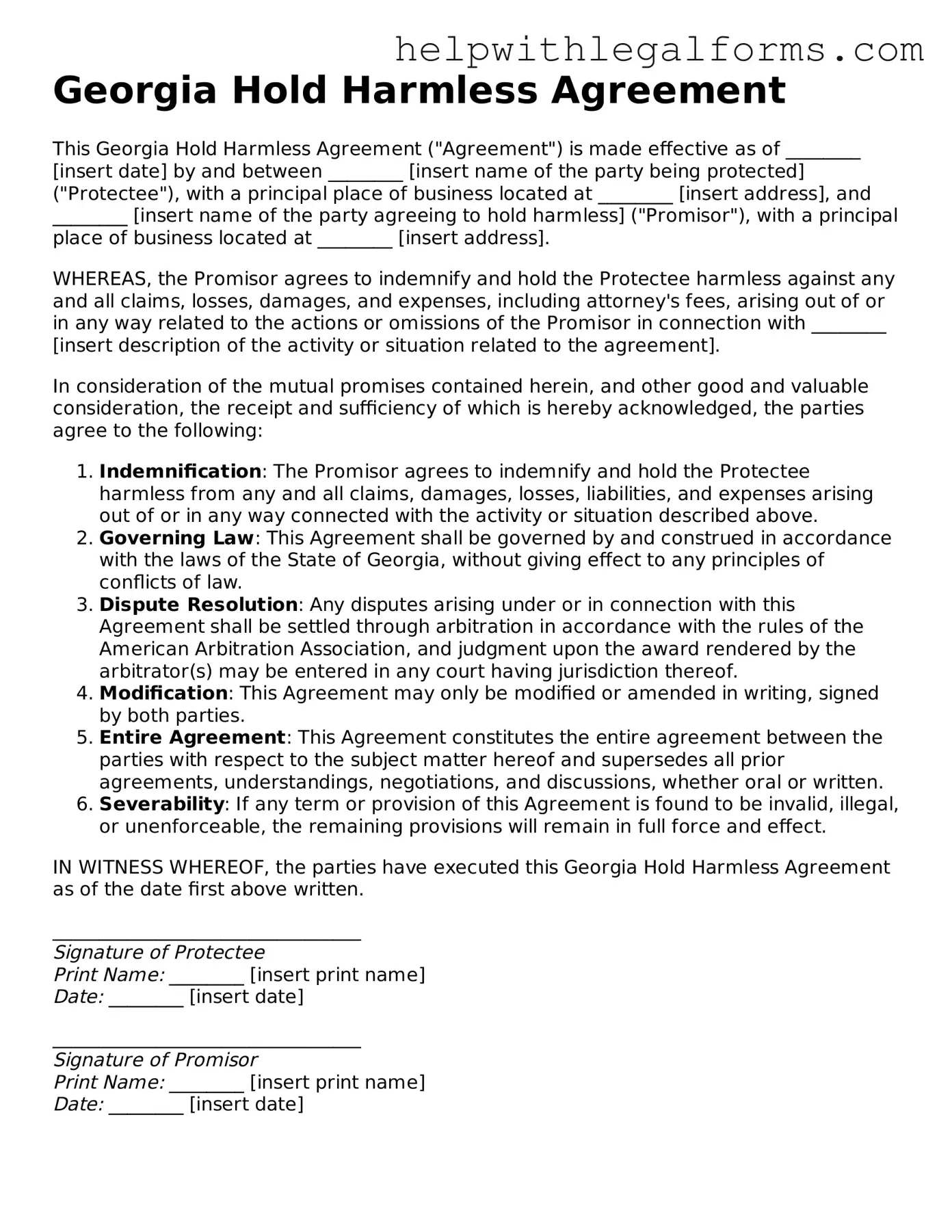What is a Georgia Hold Harmless Agreement?
A Georgia Hold Harmless Agreement is a legal document used to ensure that one party will not hold another responsible for any risk or damage. This kind of agreement is commonly used in situations where there's a potential for loss or injury, and one party wants to protect themselves from legal claims or liabilities.
When should I use a Georgia Hold Harmless Agreement?
This type of agreement should be considered when engaging in activities that involve a certain level of risk. Examples include construction projects, special events, or any scenario where one party is assuming responsibility for potential dangers or legal issues that could arise. It's particularly advisable when the activities are occurring in Georgia, as this agreement is tailored to the state's specific legal requirements and protections.
Who should sign the Georgia Hold Harmless Agreement?
Both parties involved in the agreement should sign it. This typically includes the party who is being protected from liabilities (the indemnitee) and the party who is agreeing to accept the risk (the indemnitor). Ensuring that all relevant parties sign the agreement is crucial for its effectiveness and enforceability.
Is a Georgia Hold Harmless Agreement legally binding?
Yes, once it is signed by all parties and proper considerations are made, a Georgia Hold Harmless Agreement becomes a legally binding document. However, it's important to note that for it to be enforceable, the agreement must be clearly written, specify the risks involved, and not cover scenarios involving intentional harm or gross negligence.
Do I need a lawyer to create a Georgia Hold Harmless Agreement?
While it's not required to have a lawyer create a Georgia Hold Harmless Agreement, consulting with a legal professional knowledgeable in Georgia law can be beneficial. This ensures that the agreement is properly drafted to meet specific needs and legal requirements, making it more likely to be enforceable in court.
Can a Georgia Hold Harmless Agreement be revoked or modified?
Yes, the agreement can be revoked or modified, but any changes or revocations must be made in writing and signed by both parties. It’s important to include provisions in the original agreement on how modifications and revocations can be made to ensure clarity and prevent future disputes.
What are the consequences of not having a Georgia Hold Harmless Agreement?
Without a Georgia Hold Harmless Agreement, parties may find themselves at risk of legal claims or financial liabilities in the case of damage, loss, or injury. This could lead to costly legal battles and significant financial burdens. Having such an agreement in place provides a layer of protection by clearly outlining the responsibilities and liabilities of all involved parties.
